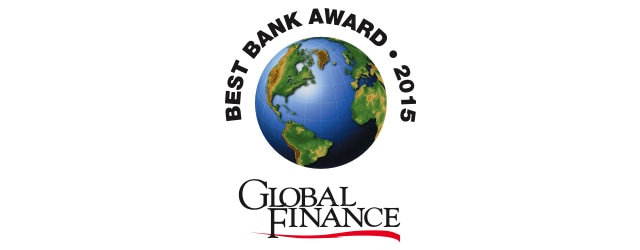Global Finance presents the winners of its 22nd annual awards for the World’s Best Banks.

Jump To Winners Page
OVERCOMING THE COMPETITION
The banking industry is undergoing a period of rapid change. New regulations, new competitors and new technology are disrupting century-old practices. Meanwhile, banks that embrace change and improve customer service are learning how to survive and prosper in a world where customer loyalty is fraying.
Nearly one in five corporations around the world changed its primary bank in the past year, according to global professional services firm EY. Companies are increasingly likely to move material parts of their banking business if presented with a more attractive price or better service, EY found in its 2014 annual survey of commercial banking. The competition extends not only to other banks but also to nontraditional competitors, such as telecom providers, technology companies and retailers. Banks are using customer analytics, digital delivery channels and service enhancements in an effort to protect and increase their market share.
In a survey of more than 2,000 middle-market businesses in 24 countries, EY found that 29% had experienced a problem with their primary bank in the past two years, and 57% were less than highly satisfied with the resolution of the error. Some 34% of businesses were considering switching their primary banking provider.
“The fact that routine errors are having such a damaging impact on businesses’ satisfaction levels, and that banks are more often than not failing to resolve these issues appropriately, is a significant cause for concern,” says Christopher Harris, principal, North America practice leader for wholesale banking, at EY.
A recent PwC survey of 177 bank CEOs in 54 countries shows that bankers’ worries about overregulation have grown from 80% in 2014 to 89% in 2015. The survey also found that 79% of the CEOs consider cyberrisk to be the top potential threat to business growth.
Kevin Burrowes, PwC’s UK financial services leader, says: “New entrants are seeking to disrupt existing models, largely by better serving customer needs. For example, crowd-funding offers new lending and deposit opportunities, and payments innovation makes transactions more convenient.”
Often, the new competitors are using technology to provide a better customer experience at a lower cost, unencumbered by a legacy infrastructure or business models, Burrowes says.
Meanwhile, banks face low and even negative interest rates, narrow spreads and damaged reputations in markets around the world. Banks in Europe will sell $109 billion of bad loans this year, an increase of 10% from a year earlier, and it will take another five years for them to get rid of problem assets, according to PwC. Italian banks have the biggest proportion of nonperforming loans in Europe, at 17% of total loans. The biggest European banks are now under the direct supervision of the European Central Bank.
Banks in North America have bounced back from the financial crisis, particularly those that focus on domestic lending. In Asia, where banks learned valuable lessons from the 1998’99 financial crisis, the region was less affected by the 2008’09 crisis. In the emerging markets of the Middle East and Africa, mobile banking has made bigger inroads than in any other region of the world.
In our 22nd annual survey, Global Finance has identified the best banks in 143 countries and eight regions. The winners are not always the biggest banks, but rather, the best—those with the qualities corporations should look for when choosing a bank.
In selecting the winners, we relied on input from industry analysts, corporate executives and banking consultants, as well as entries submitted by the banks and research done by Global Finance’s reporters and editors. Our selection criteria included growth in assets, profitability, strategic relationships, customer service, competitive pricing and innovative products. In addition, a poll of Global Finance’s corporate readership was conducted in order to increase the accuracy and reliability of the results. This year for the first time, moreover, we used a proprietary weighted algorithm to help us make our final decisions.



